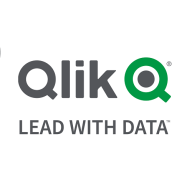

Qlik Compose and MuleSoft Composer are competing products in data management and automation. MuleSoft Composer is perceived as superior due to its robust feature set, while Qlik Compose offers strong value through pricing and support.
Features: Qlik Compose provides effective data integration and automation, data warehouse automation, and user-friendly interfaces for data transformation tasks. MuleSoft Composer offers extensive connectivity options, detailed workflow automation, and effective API management for diverse platform integration.
Room for Improvement: Qlik Compose could benefit from enhanced real-time data processing, better cloud integration, and more comprehensive training resources. MuleSoft Composer might improve with more intuitive interfaces, reduced setup complexity, and optimized cost management for smaller enterprises.
Ease of Deployment and Customer Service: MuleSoft Composer is cloud-based, ensuring simple integration with robust customer service. Qlik Compose allows both on-premises and cloud setups, offering deployment flexibility but experiencing varied customer service responsiveness.
Pricing and ROI: Qlik Compose is competitively priced, offering straightforward licensing and solid ROI, appealing especially to mid-sized enterprises. MuleSoft Composer has higher initial costs but provides a strong ROI through extensive features, making it a valuable choice for businesses needing broad integration capabilities despite the price.


Connect apps and data to Salesforce quickly and easily with clicks, not code — all inside of the Salesforce UI.
Enrich your 360-degree customer view by empowering your Salesforce admins with a no-code solution for quickly unlocking data, connecting apps, and automating integrations to boost productivity.
- Build integrations easily with clicks, not code — all inside Salesforce
- Hit the ground running with a growing library of prebuilt connectors
- Preview as you build connections and design with real data
- Monitor any errors with automatic alerts
Qlik Sense is a powerful business intelligence tool that offers a range of features to help organizations make faster and more informed decisions. Its primary use cases include operational and financial dashboards, self-service reporting, and centralized access to cross-functional reports. The solution is praised for its mobile platform, ease of use, data-sharing capabilities, and extensibility.
Qlik Sense has helped organizations improve data literacy, reduce time consumed in complex reports, and provide widely available MI to senior stakeholders. It also enables self-service analytics, improves data quality and governance, enhances collaboration, and reduces costs.
We monitor all Data Integration reviews to prevent fraudulent reviews and keep review quality high. We do not post reviews by company employees or direct competitors. We validate each review for authenticity via cross-reference with LinkedIn, and personal follow-up with the reviewer when necessary.